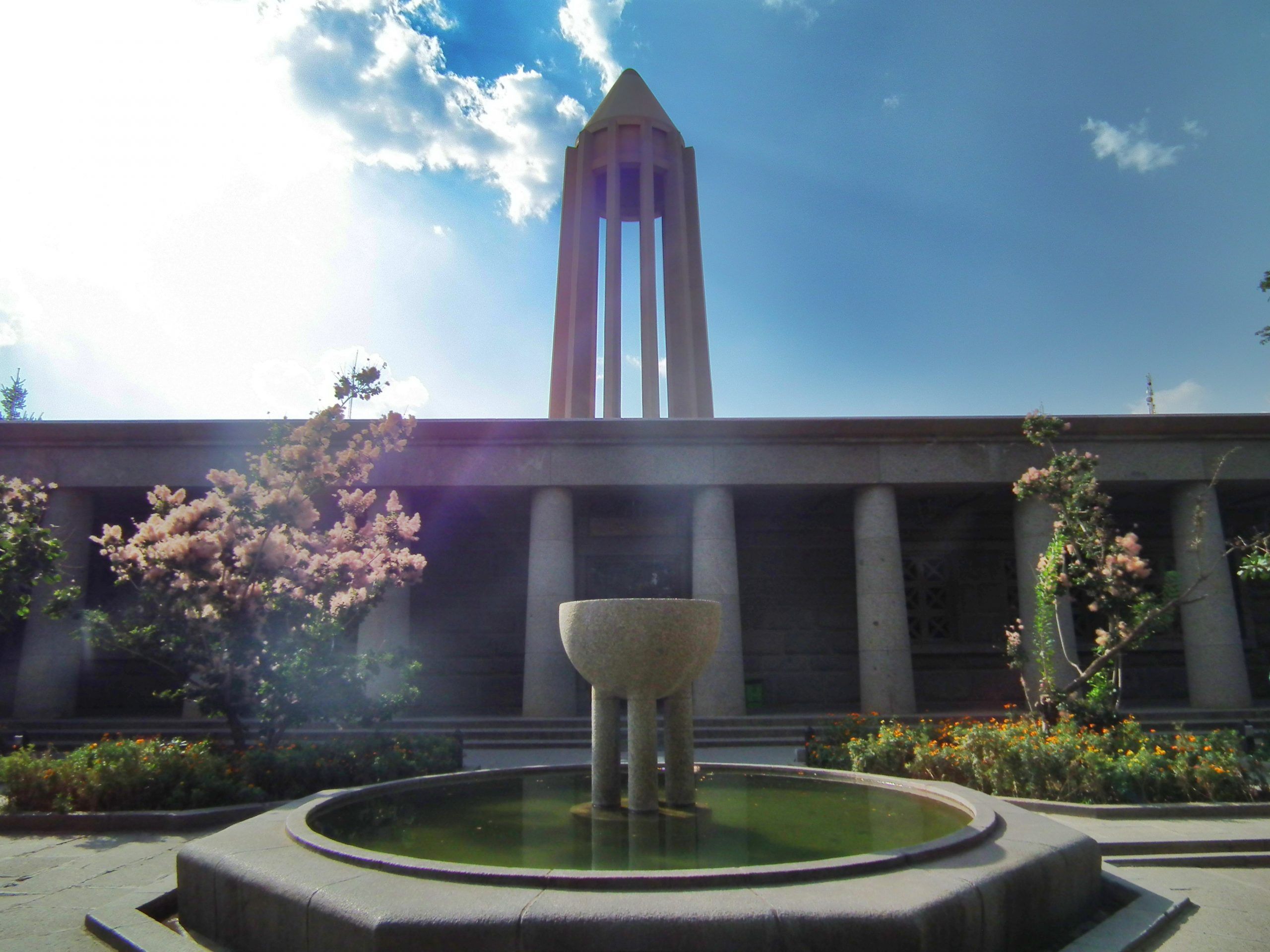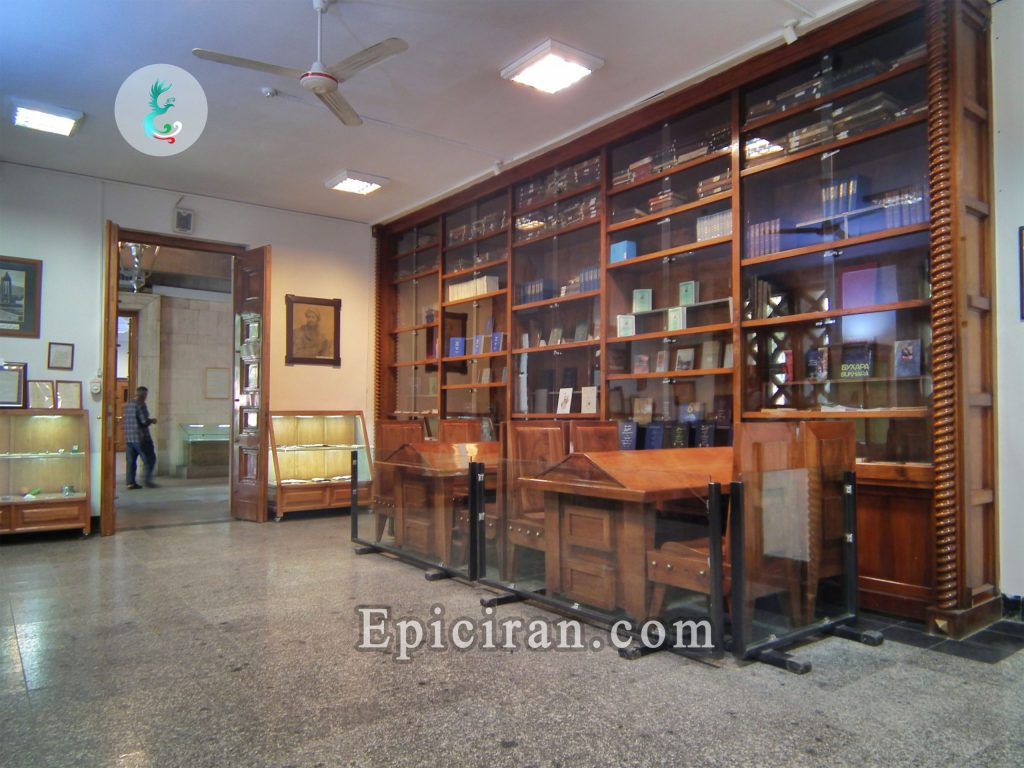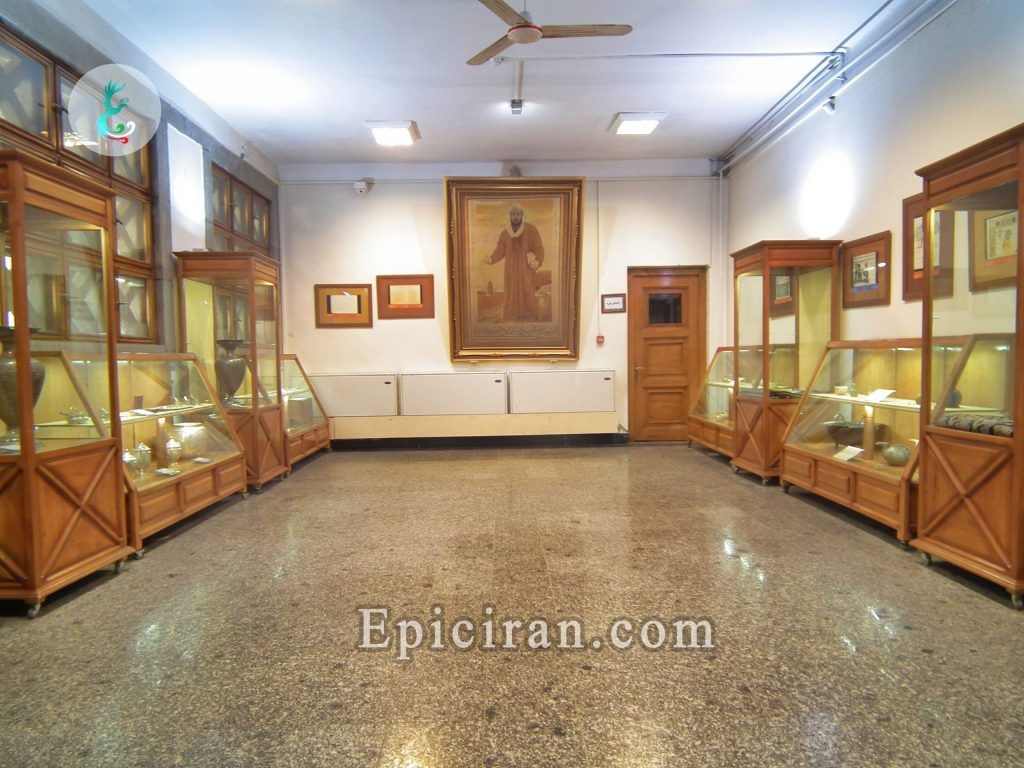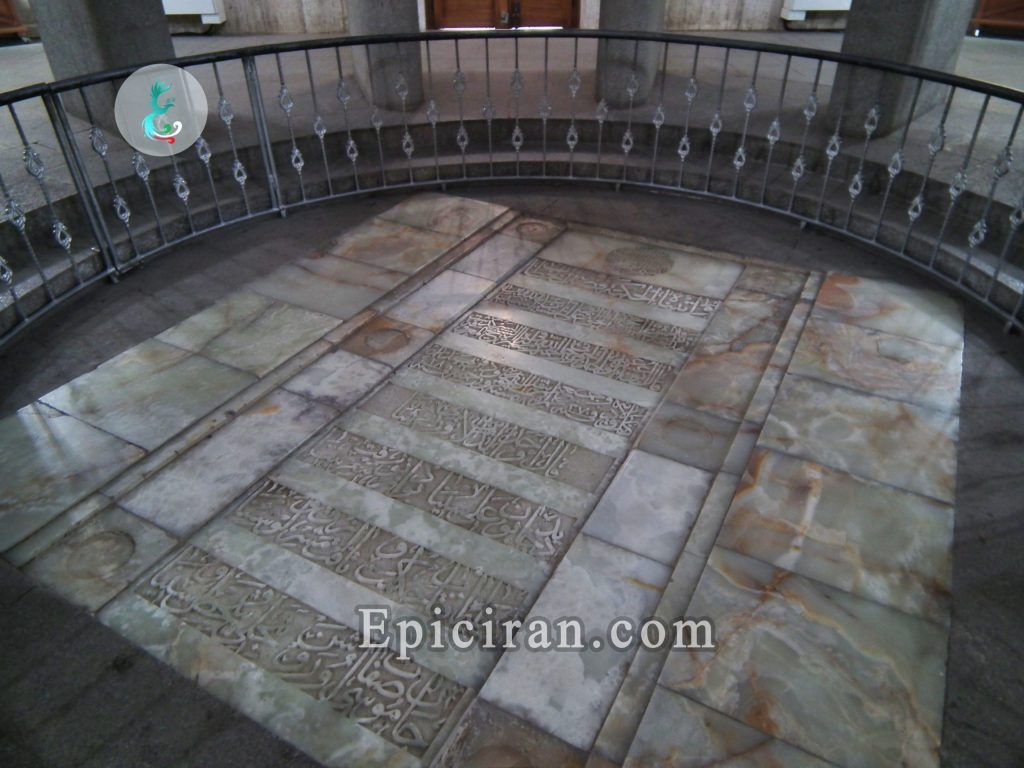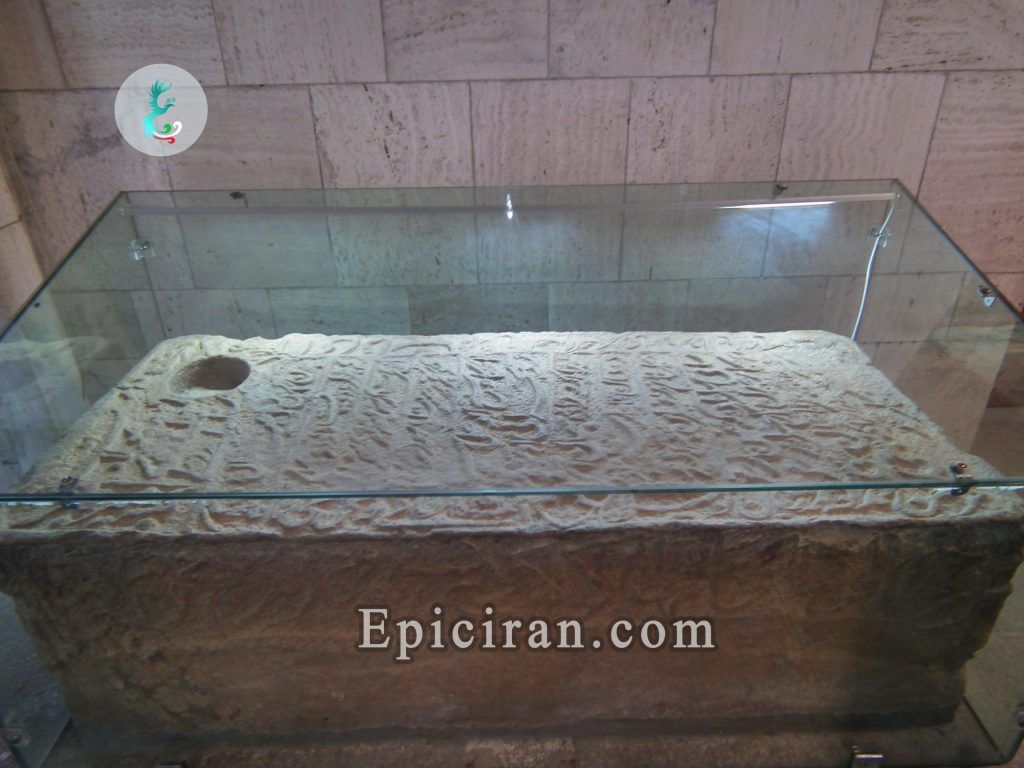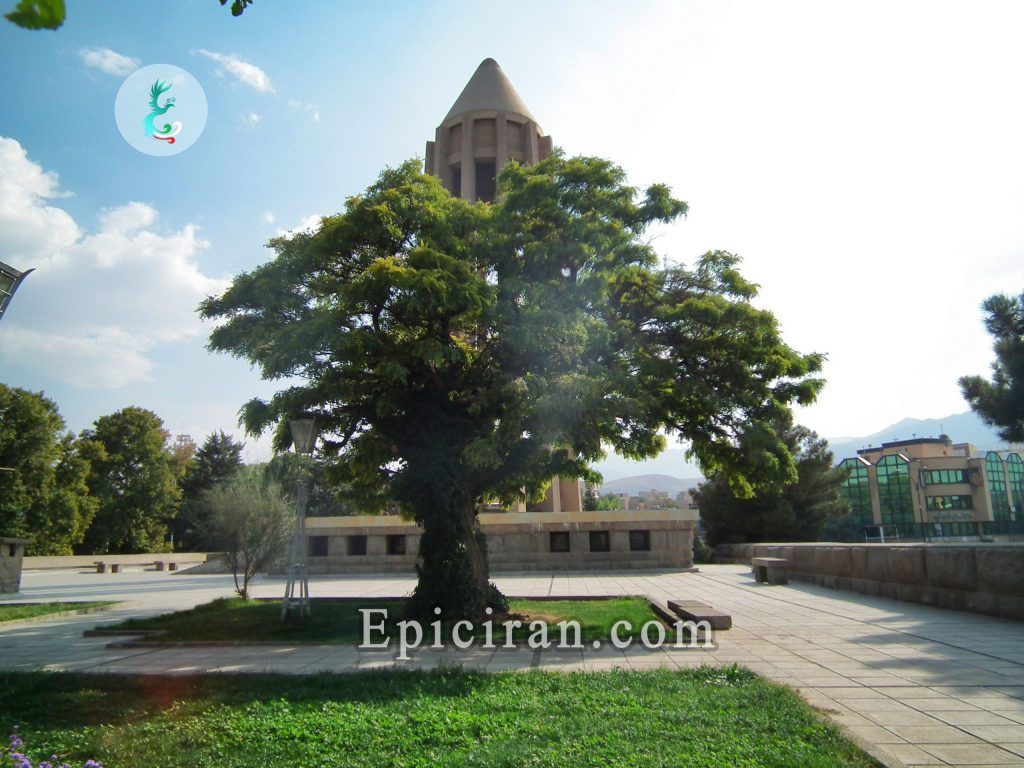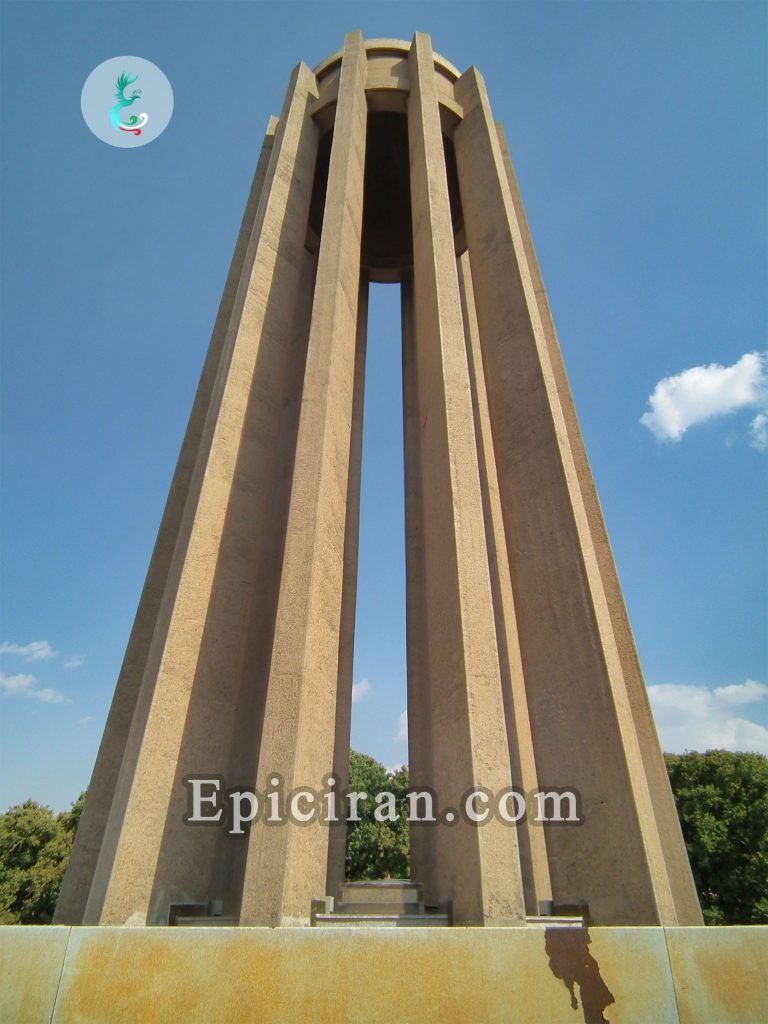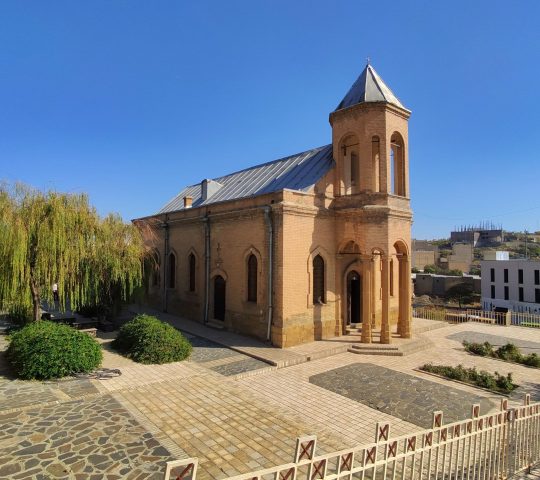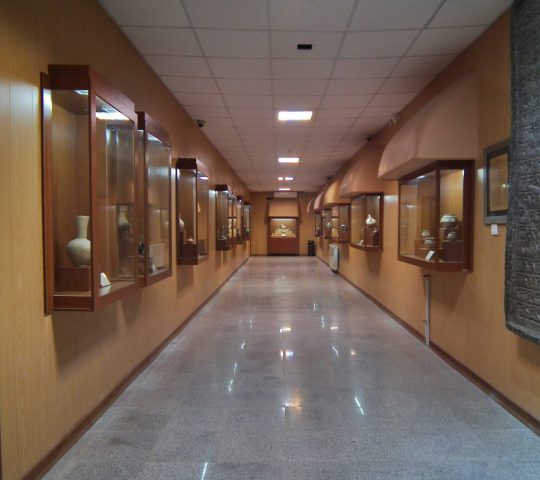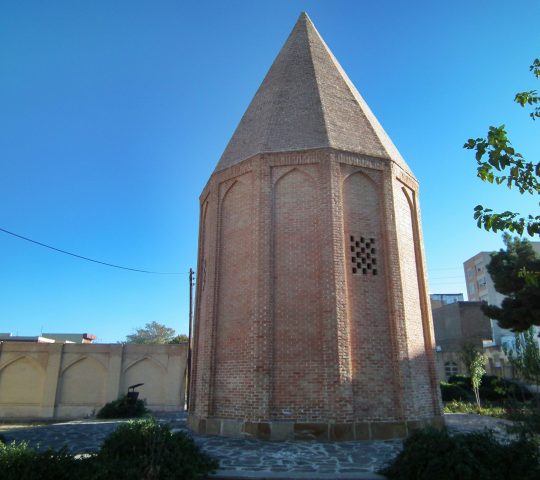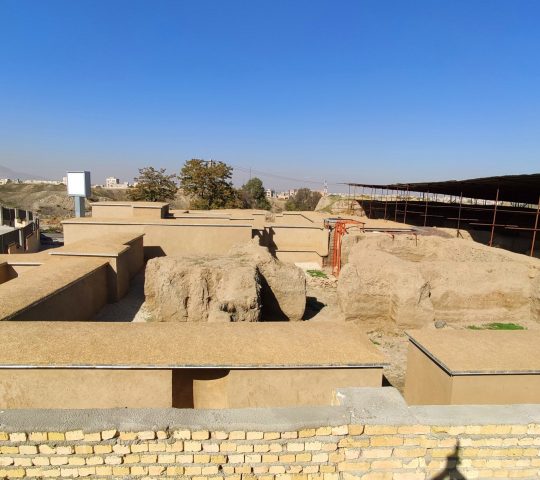Abu Ali Sina (Avicenna) or Ibn Sina, whose agnome was Sheikh al-Rayees, was one of the most famous philosophers and scholars of Iran in the field of Aristotelian philosophy and medicine. He has 450 books in various fields, most of which are in the field of medicine and philosophy. Avicenna spent most of his life migrating; he eventually died of illness in Hamadan city, at the age of 58, and was buried there in the Mausoleum of Avicenna.
The primary Mausoleum of Avicenna building was constructed during the Qajar dynasty, but during the Pahlavi period, the building was destroyed and the current mausoleum, which looks like a tower, was built. The architecture of this construction is based on the architecture of ancient Iran and the Islamic period. As this building was constructed on the occasion of the 1000th anniversary of Avicenna’s death, the porch (Iwan) of the building contains ten and the tower contains 12 pillars, which refers to 12 fields of knowledge that Avicenna benefited from during his lifetime.
There are two halls in the north and south of the mausoleum; the northern hall has become a museum, and the southern hall has been dedicated to a library that preserves over 8,000 books.
The Mausoleum of Avicenna is located near Qorban Historical Tower.

